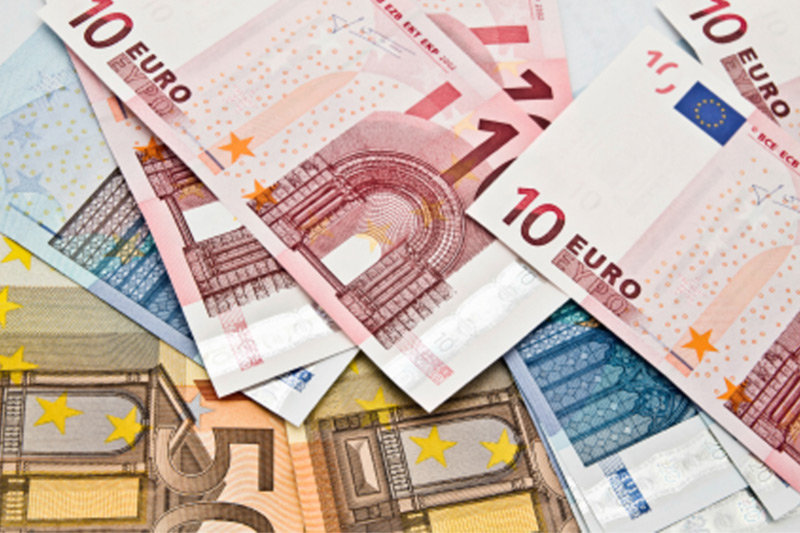Investing.com - The euro was mixed against its global counterparts on Tuesday, as the growth linked Australian and New Zealand dollars weakened amid fears over an economic slowdown in China, while investors were watching talks aimed at implementing economic reforms in Italy.
During European late morning trade, the euro was lower against the U.S. dollar, with EUR/USD shedding 0.32% to hit 1.3196.
Demand for higher-yielding assets was hit as fresh worries over a slowdown in the world’s second largest economy re-emerged, after global miner BHP Billiton said earlier that Chinese demand for iron ore is slackening.
In the euro zone, market participants were eyeing the outcome of talks between Italian Prime Minister Mario Monti and union leaders to discuss reforms to the country’s labor market, as he attempts to turn around the euro zone’s third largest economy.
The shared currency was fractionally lower against the pound, with EUR/GBP dipping 0.04% to hit 0.8326.
Sentiment on the pound was dented following a report showed that U.K. industrial order expectations declined more-than-expected in March, easing off the previous month’s six-month high.
But sterling remained supported after official data showed that the annual rate of consumer price inflation in the U.K. eased to the lowest since November 2010 in February, dampening expectations for a fresh round of easing measures from the Bank of England.
The euro was trading close to a five-month high against the broadly weaker yen, with EUR/JPY adding 0.19% to hit 110.55.
The single currency was steady against the Swiss franc, with EUR/CHF inching down 0.03% to hit 1.2059.
In Switzerland, official data earlier showed that industrial production jumped in the last three months of 2011, rising 7.9% and blowing past expectations for a 0.4% gain.
The shared currency was slightly higher against the Canadian dollar and posted strong gains against the Australian and New Zealand dollars, with EUR/CAD rising 0.14% to hit 1.3084, EUR/AUD surging 0.77% to hit 1.2575 and EUR/NZD jumping 0.83% to hit 1.6153.
Earlier Tuesday, the minutes of the Reserve Bank of Australia’s March meeting showed that policymakers believe there is "ample scope" to cut interest rates in the event of a sharp slowdown in the economy arising from the debt crisis in the euro zone.
Later in the day, the U.S. was to produce official data on building permits and housing starts. Meanwhile, Federal Reserve Chairman Ben Bernanke was to speak at an event in Washington; his comments would be closely watched.
During European late morning trade, the euro was lower against the U.S. dollar, with EUR/USD shedding 0.32% to hit 1.3196.
Demand for higher-yielding assets was hit as fresh worries over a slowdown in the world’s second largest economy re-emerged, after global miner BHP Billiton said earlier that Chinese demand for iron ore is slackening.
In the euro zone, market participants were eyeing the outcome of talks between Italian Prime Minister Mario Monti and union leaders to discuss reforms to the country’s labor market, as he attempts to turn around the euro zone’s third largest economy.
The shared currency was fractionally lower against the pound, with EUR/GBP dipping 0.04% to hit 0.8326.
Sentiment on the pound was dented following a report showed that U.K. industrial order expectations declined more-than-expected in March, easing off the previous month’s six-month high.
But sterling remained supported after official data showed that the annual rate of consumer price inflation in the U.K. eased to the lowest since November 2010 in February, dampening expectations for a fresh round of easing measures from the Bank of England.
The euro was trading close to a five-month high against the broadly weaker yen, with EUR/JPY adding 0.19% to hit 110.55.
The single currency was steady against the Swiss franc, with EUR/CHF inching down 0.03% to hit 1.2059.
In Switzerland, official data earlier showed that industrial production jumped in the last three months of 2011, rising 7.9% and blowing past expectations for a 0.4% gain.
The shared currency was slightly higher against the Canadian dollar and posted strong gains against the Australian and New Zealand dollars, with EUR/CAD rising 0.14% to hit 1.3084, EUR/AUD surging 0.77% to hit 1.2575 and EUR/NZD jumping 0.83% to hit 1.6153.
Earlier Tuesday, the minutes of the Reserve Bank of Australia’s March meeting showed that policymakers believe there is "ample scope" to cut interest rates in the event of a sharp slowdown in the economy arising from the debt crisis in the euro zone.
Later in the day, the U.S. was to produce official data on building permits and housing starts. Meanwhile, Federal Reserve Chairman Ben Bernanke was to speak at an event in Washington; his comments would be closely watched.
